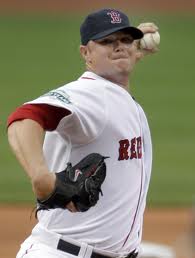
One of our most obvious roster gaps heading into the off-season was a veteran 4th starter, and today Mike Rizzo got his man.
Jon Lester. 3-time World Series winner, cancer survivor, noted wine aficionado, signs a one-year $5M deal with the ubiquitous mutual option that is never mutually agreed to, to be our 4th starter for 2021.
Lester joins an esteemed list of “veteran 4th starters signed to pillow contracts” under the Rizzo regime. To wit:
- 2010: Jason Marquis (though to be fair he signed a 2 year deal to probably be more than our 4th starter).
- 2011: Chien-Ming Wang
- 2012: Edwin Jackson, the first of the “real” 4th starter FA assassins
- 2013: Dan Haren
- 2014: Doug Fister
- 2018: Jeremy Hellickson
- 2019: Anibel Sanchez
To be fair here, Fister was of course a trade acquisition, and was much more than a 4th starter, but his acquisition, plus Scherzer signing and the eventual rise of home grown products like Roark and Ross led to several years without a need to pursue the veteran 4th starter. Not surprisingly, they made the playoffs 3 of 4 years in this timeframe … inexplicably missing the playoffs in 2015 in a season I hand squarely on the incompetence of Matt Williams. But I digress.
Clearly Rizzo’s strategy in building a rotation goes like this: splurge for the top of your rotation, sign a veteran for your 4th starter, let the kids compete for the 5th starter. What I’d LIKE it to be is, grow a couple of stud starters, pair them with your $30M/year guys, and dominate. He’s had had a slew of misses in the 1st round in the last decade, gave up too early on others (ahem Giolito), and now seems to have put their eggs into the Cavalli/Rutledge basket. Lets hope.
Anyway, back to this post. What do I think of the Lester signing? Well…. i think he’ll be a great clubhouse guy. But i’m tempered on what I think he can provide on the field, unfortunately. Lester went from being an #1/#2 kinda guy to being a #4 starter right starting with the 2017 season. He saw a sustained bump in his WHIP starting in 2017, which he somehow danced around in 2018 to put together a smoke-and-mirrors 18win season where his FIP was a full point higher than his ERA. This run of luck came back to bite him in 2019, in the form of a .347 BABIP that ballooned his ERA to ugly territory. 2020 was a wash; he was bad across the board, which could be a pretty bad sign for 2021.
Now he’ll be in his age 37 season with a whole lotta mileage on his known torn UCL elbow. He’s also famous for his inability to keep runners on first base … which will put pressure on his catchers. Gomes is pretty decent at caught stealing percentage (.305 pct in 2019, which was 6th or 7th or so of “regular” catchers in the league), but who knows about whatever backup we pick.
Do we think Lester is a bounce back candidate? Can he flourish when he’s not “the man” in the rotation? How much does he have left in the tank? All interesting questions. At the worst case its a very small price tag to take that gamble.
Payroll implication; not a heck of a lot. $5M doesn’t really change anything else the team might be doing, which makes this a positive. I now have their projected 2021 payroll at $181M, leaving them a shade under $29M left to work with. Notably, they have about $11.5M in deferred dollars this year, plus their “real” 2021 payroll (i.e. actual dollars heading out the door versus cap space dollar figure) is another $9.5M … so that’s $20M of money that the Lerners may be removing from consideration … which means they only want to spend about another $9m. Maybe. Just throwing that out there; there’s a real versus cap space payroll consideration here as the team starts to see a lot of its deferred dollar contracts catching up to them.
My conclusion; proceed with caution. I would have liked to roll the dice with another candidate on the FA market.







